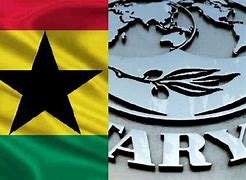Severe debt challenges persist although South Africa’s budget for the fiscal year ending 2021 reflects an upbeat in revenue generation, Fitch ratings says.
The South African government still faces tremendous challenges in its ability to implement consolidation. Fitch notes that the government’s debt will keep rising in the medium term. Therefore, posing downside risks that are reflected in its current negative rating outlook of BB-.
According to the Credit Ratings Agency, the government’s consolidated fiscal deficit projection for year-end 2020 was 14% of GDP, slightly below the 15.7% projected in the Medium-Term Budget Policy Statement in October 2020.
The improvement in performance this year partly reflects higher-than-expected revenues. Wherefore, the government projects will exceed its October forecasts by approximately 2% of GDP. The boost in revenue generation is partly attributed to the rebound in the prices of mining commodities. And also a stronger-than-expected recovery in domestic demand.
South African Government’s medium-term Framework
Fitch Ratings projects fiscal spending to hit ZAR38 billion (0.8% of GDP). And relatively lower than expected in comparison to the country’s rating downgrade in November 2020.
This is due to a court decision last year that ruled that the government did not have to pay a previously agreed three-year wage payment with the public-sector labour unions. Meanwhile, an appeal by the labour unions to the court over this verdict is still pending.
Considering the robust improvement thus far, the government has moved to revise its forecasts for the fiscal deficit through to 2023 by approximately 1% of GDP per year and now aims at stabilizing gross government debt at 89% of GDP by 2025 as compared to an earlier target of 95% of GDP.
Moreover, under the government’s medium-term expenditure framework, the authorities aim for 8.6% of GDP improvement in the consolidated primary deficit between 2020 and 2023. A large part of the decline in the deficit will come from the phasing out of pandemic-related spending and a lower wage bill. The South African government hopes to see a primary surplus by 2024/25.
Among other things, the government plans to reduce non-interest expenditure by around 2% of GDP relative to pre-pandemic levels. About half of this reduction will come from lower spending on wages.
Challenges towards reducing fiscal deficit
However, Fitch believes that reduction of this magnitude will be difficult to achieve. It therefore maintains a more conservative outlook than the government about the pace of fiscal consolidation.
Fitch notes that, an improvement of approximately 1% of GDP in the primary balance will be achieved through a gradual recovery in revenue mobilization post-pandemic. But as it stands now, the government has withdrawn plans for a minor three-year tax package, worth ZAR 40 billion as it announced in its supplementary budget in June 2020.
Reducing wage growth lies paramount in the government’s medium-term fiscal framework plan. But, this is a big political hurdle the government has to cross. The lower-than-expected fiscal deficit in 2020 may cause labour unions to pressure the government to soften its stance on wages. Also, with elections due later this year, such a move could undermine the government’s performance at the polls.
These notwithstanding, the government is likely to face other challenges in meeting its fiscal consolidation targets. A number of difficulties including structural bottlenecks continue to impede the medium-term growth prospects, Fitch asserts.
Although Fitch forecasts GDP growth to rebound to 3.6% in 2021. This reflects base effects and the sharp recovery in mining prices. Weak growth will hinder the authorities’ efforts to reduce the budget deficit. While simultaneously attempting to tackle very high social inequality and high unemployment.
READ ALSO: Government’s Debt woes to continue into 2022, Energy Sector Debt poses risk- Fitch Ratings



















